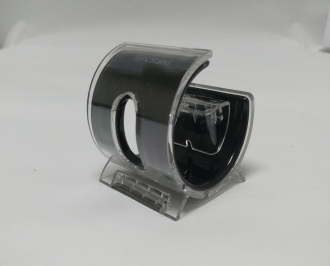Since the reform and opening up, due to the sustained and rapid economic development in China, the demand for petrochemical products has continued to increase. The domestic petrochemical industry and product markets are in a state of rapid development. Various regions and major companies are actively planning and preparing ethylene projects. With the rapid development of the ethylene industry, all parties should pay close attention to the layout of the ethylene industry.
The ethylene industry is a high-input, high-output, high-tech heavy chemical industry. The ethylene industry layout must meet the needs of the country's overall development and meet the regional economic characteristics.
In the aspect of the ethylene industry's layout, the oil and chemical industries of the Western countries have adjusted and developed over the past decades, constantly adapting to the requirements of strategic, large-scale, and modernization, and adjusting the product structure, strengthening the core business, and accelerating the development of technology-intensive industries. Economic transfer has gradually led to the formation of a highly concentrated industrial zone, achieving integration of the upstream and downstream, with considerable economies of scale and rapid development. For example, in the Gulf of Mexico region in the United States, Tokyo Bay in Japan, and the coastal port areas in South Korea, all through concentrated investment and integrated operations, the raw material supply is shared to the maximum extent, the production costs of petroleum and petrochemical products are reduced, and companies are raised in the era of high oil prices. The competitiveness.
93% of the US's ethylene production capacity is concentrated in the Gulf of Mexico. After decades of development, the world economy has undergone enormous changes. However, the characteristics of the US ethylene industry highlighting the regional economy have not changed.
As early as 1981, crude oil production in the Gulf of Mexico reached 85.03 million tons per year, accounting for 20.2% of the total US production. Ethylene production was 16.06 million tons per year, accounting for 88.9% of the United States. Natural gas processing volume was 949 million cubic meters per day, accounting for 47.1% of the total processing volume in the United States. At that time, a total of 66 large-scale petrochemical plants were concentrated in Texas and Louisiana in the Gulf of Mexico. These petrochemical companies not only integrated oil and gasification but also integrated gasification. Most ethylene plants use natural gas separation plants for the cracking of ethane. In the decades from 1981 to 2004, the layout of the ethylene industrial plant has changed little. Of the 28,133,000 tons/year ethylene capacity currently produced, only five ethylene plants are built inland, and all ethylene plants based on naphtha are built in these two states. This layout method maximizes the advantages of resources.
At present, the layout of the United States ethylene industry has formed the following characteristics. First of all, the layout of production capacity is concentrated and the advantages of resources are utilized to the maximum extent. At present, the United States has an ethylene production capacity of 28.313 million tons per year, the largest in the world, and its layout is extremely concentrated. Ethylene plants that account for 93% of the total ethylene production capacity in the United States are concentrated in the Gulf of Mexico.
Secondly, the cracking raw materials of ethylene plants in the United States are diversified, such as natural gas and naphtha, and most of the raw materials are supplied by domestic sources. Ethylene plants are close to raw material production areas. Texas and Louisiana are not only the central source of ethylene, but also the focus of refineries and gas plants. The number of refineries in these two states accounted for 29% of the United States, processing volume accounted for 42.6% of the country, close to half of the country's crude oil production. This makes it easier for the supporting ethylene plant to be larger, and the company is also more internationally competitive.
Third, most products of petrochemical enterprises are not the final products required by the market, but further processing is required. Petrochemical products are transported through advanced railway and highway systems, and are highly compatible with downstream industrial production facilities. Centralized layout is of great significance for the comprehensive utilization of downstream products and the enhancement of industry competitiveness.
Japan's 60% ethylene production capacity is concentrated in Tokyo Bay and Okayama Japan's ethylene production capacity of 7.51 million tons per year in 2004, mainly concentrated in two coastal regions (Tokyo Bay and Okayama), and the ethylene production capacity in Tokyo Bay area accounts for the total production capacity in Japan. 60%. In 2005, Japan’s ethylene production capacity accounted for the third place in the world, and the layout was relatively concentrated. In recent years, few new devices have been constructed. This layout method effectively supports the economic development of resource-poor Japan.
Japan's ethylene cracking raw materials are mainly naphtha, which is solved by imports. Japan's petrochemical products have been developed with great quality and stability. Some of them are used for export and have high reputation and international competitiveness. Japan's ethylene industry is mainly making efforts to strengthen, which is a very effective way under the background of high oil prices.
South Korea's ethylene production capacity is mainly concentrated in the coastal port areas South Korea's 2004 ethylene production capacity of 5.45 million tons / year, mainly concentrated in several locations in coastal ports, such as Dashan, Lishui, Incheon and Ulsan. Similar to Japan, South Korea's ethylene feedstock is mainly naphtha, the country's lack of crude oil, relying on imports to resolve.
Petrochemical companies in South Korea attach great importance to technological innovation, especially product development. At present, petrochemical products are mainly export-oriented and have high cost competitiveness. A large number of plastic and chemical fiber products enter the Chinese market. In the coastal areas, ethylene production enterprises with high priority for construction have a large capacity, and use a large number of raw materials, auxiliary materials, semi-finished products and products, and the supporting systems are complex. Therefore, when the plants are built, they are required to have larger environmental capacity and safe capacity in order to prevent Major emergencies.
Most of the world’s ethylene plants are built in coastal port cities, and generally coastal sites are better than inland. Judging from the development history of the ethylene industry in the world, regions with deep water, convenient transportation, convenient transportation, and a well-developed market and economy are ideal locations for attracting investment and building petrochemical zones. This is also the world’s developed ethylene production facilities concentrated in coastal areas. The important reason.
Injection Charger Base Accessories


The design theme of the accessories for the injection charger base is the product design and mold design of the universal charger base, which is designed for the production of injection mold. Plastic parts
The preliminary analysis of the structure shows that the sprue and the sequence type, the structure and the adoption of a two-cavity mold are due to the large area of plastic parts. Due to the structural characteristics of plastic parts, it needs to use inclined sliding traction mechanism. The specific design process is as follows: first, the performance analysis of the plastic injection molding process. This includes analysis of the structural dimensions of the material properties of the plastic parts and molded plastic parts. Second, it is the choice of how to inject a reasonable machine. Choosing the right injection molding machine is the foundation of this design. Again, this is in the form of the mold structure preparation. The form structure of the mold must be calculated and a reasonable choice is based on the dimensions of the structure. The fourth step is to design the pouring system.
The fifth step is such a design in the design and mold parts of the calculation focus. The sixth step is to draw the sliding cover design of the oblique profile and the calculation of the core mechanism.
Injection Charger Base Accessories,Iphone Charger Base,Black Injection Molding,Injection Molding Machine
Timeplex Industrial Limited , https://www.hktimeplex.com